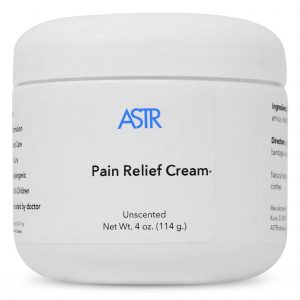Chiropractic Adjustment: Definition, Uses, Types, Treatment & Research Studies
Chiropractic Adjustment: Definition, Uses, Types, Treatment & Research Studies
What is Chiropractic Adjustment?
A chiropractic adjustment it is also called joint manipulation or joint mobilization. Chiropractic adjustment involves the chiropractor manually manipulating of the spine. Chiropractic adjustments may treat low back pain and any other abnormal functions of the body. It can also help with a “fixed” or “locked” joint, or joint that is not moving. The goal of an adjustment is to increase range of motion, reduce nerve irritability and improve function.
What does a Chiropractic Adjustment do?
A chiropractic adjustment is done to avoid any degeneration of soft tissue and to help normalize spinal function. The body’s natural healing process can begin to work properly once the nervous system is functioning well.
Types of Chiropractic Adjustment
An adjustment can either be a high velocity, low amplitude adjustment or manipulation. A quick thrust applied to the vertebrae releases the gas (joint cavitation) which releases the pressure within the joint.
Chiropractic Adjustment Research Studies
- A systematic review is a type of literature review that collect and critically analyze multiple research studies or papers. A systematic review by Rubinstein et al. researched the the effectiveness of spinal manipulation therapy for those suffering from chronic lower back pain.24 This study assessed 26 randomized controlled trials including 6070 participants.24 Evidence showed no significant difference between spinal manipulation therapy and other intervention approaches.24
- A systematic review is a type of literature review that collect and critically analyze multiple research studies or papers. A systematic review published by Canter and Ernst studied the effectiveness of spinal manipulation for treatment of multiple regions of pain, including, but not limited to, back and neck pain.32 16 trials were included for the purpose of this study.32 Evidence suggested that spinal manipulation was ineffective for all evaluated forms of pain.32
Based on the evidence presented in the included systematic reviews, spinal manipulation does not appear to be an effective form of treatment for different pain types, including back pain. While spinal manipulation is seen as ineffective, ASTR treatment has shown evidence in a recent study that show it can be effective for many evaluated forms of pain. ASTR stands for Advanced Soft Tissue Release, a manual therapy specialty developed by Dr. Joesph Jacobs, DPT. ASTR takes a holistic approach to treating the source of soft tissue restriction in a way that is virtually pain-free and highly effective.
Referencias:
24. Rubinstein SM, Terwee CB, Assendelft WJ, Boer MRD, Tulder MWV. Terapia de manipulación espinal para el dolor lumbar agudo. Columna vertebral. 2011;36(13):825-846. doi:10.1002/14651858.cd008880.pub2.
25. Gattie E, Cleland JA, Snodgrass S. La eficacia de la punción seca en el punto gatillo para afecciones musculoesqueléticas por parte de fisioterapeutas: una revisión sistemática y un metanálisis. Revista de fisioterapia ortopédica y deportiva. 2017;47(3):133-149. doi:10.2519/jospt.2017.7096.
26. Dunning J, Butts R, Mourad F, Young I, Flannagan S, Perreault T. Punción seca: una revisión de la literatura con implicaciones para las guías de práctica clínica. Revisiones de fisioterapia. 2014;19(4):252-265. doi:10.1179/1743288x13y.0000000118.
27. Morihisa R Eskew J McNamara A, et al. Punción seca en sujetos con puntos gatillo musculares en el cuarto inferior: una revisión sistemática. Int J Sports Phys Ther. 2016;11(1):1-14.
28. Cotchett MP, Landorf KB, Munteanu SE. Eficacia de la punción seca y las inyecciones de los puntos gatillo miofasciales asociados con el dolor en el talón plantar: una revisión sistemática. J Pie Tobillo Res. 2010;3:18.
29. Cummings TM, Blanco AR. Terapias con agujas en el manejo del dolor de los puntos gatillo miofasciales: una revisión sistemática. Arch Phys Med Rehabil 2001;82:986-92.
30. Xue CC, Helme RD, Gibson S, et al. Efecto de la electroacupuntura sobre el consumo de opioides en pacientes con dolor musculoesquelético crónico: protocolo de un ensayo controlado aleatorio. Ensayos. 2012;13:169. doi:10.1186/1745-6215-13-169.
31. Scott N. A., Guo B., Barton P. M., Gerwin R. D. Trigger point injections for chronic non-malignant musculoskeletal pain: a systematic review. Medicina para el dolor. 2009;10(1):54–69. doi: 10.1111/j.1526-4637.2008.00526.x.
32. Ernst E., Canter PH. Una revisión sistemática de revisiones sistemáticas de manipulación espinal. Revista de la Royal Society of Medicine. 2006;99(4):192-196.
Tratamiento efectivo para el alivio del dolor en el hogar

- Resultados rápidos
- El tratamiento dura unos 5 minutos al día
- Herramientas médicas fáciles de usar
- Enfoque holístico natural
- Tratar la raíz del problema
- Inventado por un médico que tenía dolor crónico
- Apoyado por más de 45 estudios
ASTR excepcionalmente diferente
Reseñas recopiladas de varios sitios web
Sanar más rápido




